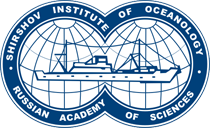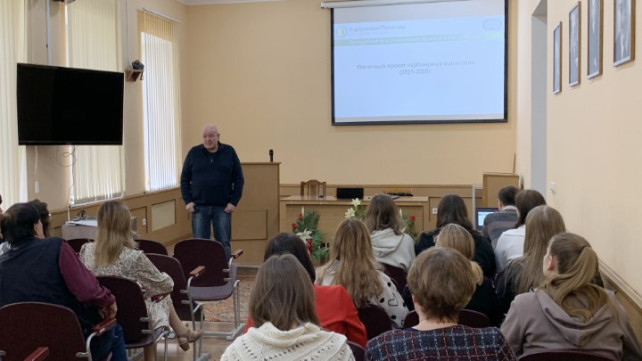On April 10, a seminar was held at the Steppe Institute of the Ural Branch of the Russian Academy of Sciences on the problem of climate change and control of the carbon balance of Russia, at which Sergei Konstantinovich Gulev, Corresponding Member of the Russian Academy of Sciences, Doctor of Physical and Mathematical Sciences, Professor of the Department of Oceanology of the Geography Faculty of Moscow State University, Head of the Laboratory of Shirshov Institute of Oceanology of RAS, Head of the Expert Center for Scientific and Methodological Support for the Creation and Operation of Carbon Polygons in the Russian Federation, made a report on the topic "Pilot Project of Carbon Polygons (2021-2025)".
Sergei Konstantinovich spoke about the goals, objectives and prospects of the pilot project of the carbon polygons of the Ministry of Education and Science and the role of this project in solving the problems of climate change.
The report noted that the pilot project to create a network of carbon polygons in the Russian Federation is being implemented within the framework of the national action plan for adaptation to modern climate change and its consequences, ensuring environmental safety and improving the state of the environment. The main goal of the project is to create a regional network of observations of greenhouse gas flows in the territory of the Russian Federation to obtain reliable information on the integral values and scales of temporal and spatial variability of absorption and emission of key greenhouse gases by terrestrial (forests, forest-steppe, steppe, swamps, agricultural lands) and marine ecosystems, including areas with permafrost, as well as to obtain data on the sensitivity of flows to changes in environmental conditions.
Carbon polygons for monitoring greenhouse gas flows are created in the most representative natural terrestrial and aquatic ecosystems, allowing us to assess the scale of spatial and temporal variability of greenhouse gas emissions and absorption on the territory of the Russian Federation, taking into account the existing diversity and variability of climatic conditions, land use structure, vegetation and soil cover, and relief.
Some of the main tasks of carbon polygons are: monitoring observations of greenhouse gas emissions and absorption in natural ecosystems using ground-based and remote measurement methods; assessment of spatial and temporal variability of greenhouse gas emissions and absorption in representative natural landscapes; determination of integral flow values for various territories over certain time intervals. An important area of activity of carbon polygons is the development of technological solutions for monitoring greenhouse gas emissions and absorption by natural ecosystems, aimed at reducing their emissions and increasing their absorption from the atmosphere.
Currently, 18 carbon polygons (~40,000 ha) have already been created, representative of 21 of the 95 ecoregions of the Russian Federation, which together make up 23.2% of its area.
The test sites are operated by research institutes of the Russian Academy of Sciences and leading universities of the Russian Federation.
Research at the created carbon testing sites, as the speaker noted, is carried out using a comprehensive approach, including ground measurements (balance, pulsation, chamber), remote sensing, mathematical modeling, which provide a complete picture of the structure of the carbon balance and greenhouse gas flows.
In addition to the staff of the Steppe Institute of the Ural Branch of the Russian Academy of Sciences, the event was attended by teachers and students of the Orenburg State Agrarian University, as well as a scientist from Kazakhstan - Doctor of Biological Sciences, Professor of the Higher School of Natural Sciences of the International University of Astana Nurushev M.Zh.




